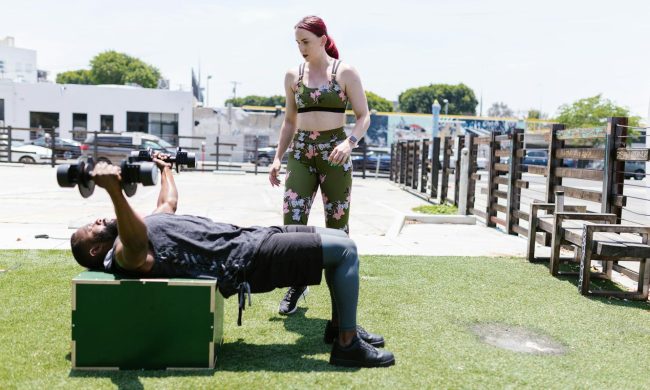The bench press is one of the classic elite powerlifting moves that you’ll see plenty of people powering through in the gym. Research shows that performing the bench press as part of a resistance training routine enhances muscle strength, so it’s an exercise worthy of inclusion in your schedule.
In interesting new research, researchers wanted to test the one-rep max method to determine how much it increased strength for lifters. Let’s delve into the research.
The study

In a study published in the Journal of Exercise Physiology Online, researchers explored the efficacy of doing a one-rep max (1RM) every day for over 30 days. How does this method impact muscle strength in lifters? Does pushing your bench press limits once a day every day for 34 days generate results?
The study involved seven physically active lifters. During every training session, participants determined their one-rep max before completing five-volume sets of two reps at 90% of that day’s 1RM or three reps at 85% of that day’s 1RM. On day 35, the lifters completed five sets of one rep at 90-100% of their 1RM from the first day of the study. Participants rested on days 36 and 37, and the training ended with one last 1RM on day 38.
Most fitness professionals don’t recommend doing a one-rep max every day, but the results of this study are interesting, nonetheless.
The results

Here are the results:
- All of the lifters in the study experienced significant improvements in their one-rep max from the first day to peak performance, with a 29.23% gain and an average weight increase of 40.71 lbs.
- Males had a greater total increase of 50 lbs, and females had an increase of 33.75 lbs.
- Both males and females had almost identical relative strength gains, with males experiencing a 29.45% improvement and women with a 29.03% improvement.
- Overall, there was a 28% strength increase, showing that this bench press protocol definitely yielded results and pumped up that muscle power.
Concluding thoughts

Three of the seven lifters reported pain at some point, which is another reason why daily one-rep maxes aren’t the ideal choice for boosting muscle. Fitness professionals advise against just “working through the pain” because it can compromise your form and increase your risk of injury. Regular rest days are also important to give your muscles a sufficient chance to rest, recover, and repair. While going for a one-rep max every day isn’t usually recommended, this study shows us that pushing your limits here and there can be effective for significantly enhancing muscle strength in a shorter time period. Lifters gained substantial strength in just over a month in this study without reaching burnout.
That being said, one-rep max training isn’t necessary to deliver results, and this is a small study, making it difficult to draw clear conclusions. More research is needed to examine the safety and efficacy of daily one-rep max methods, which could pose more risks than benefits over time, especially for some people.



